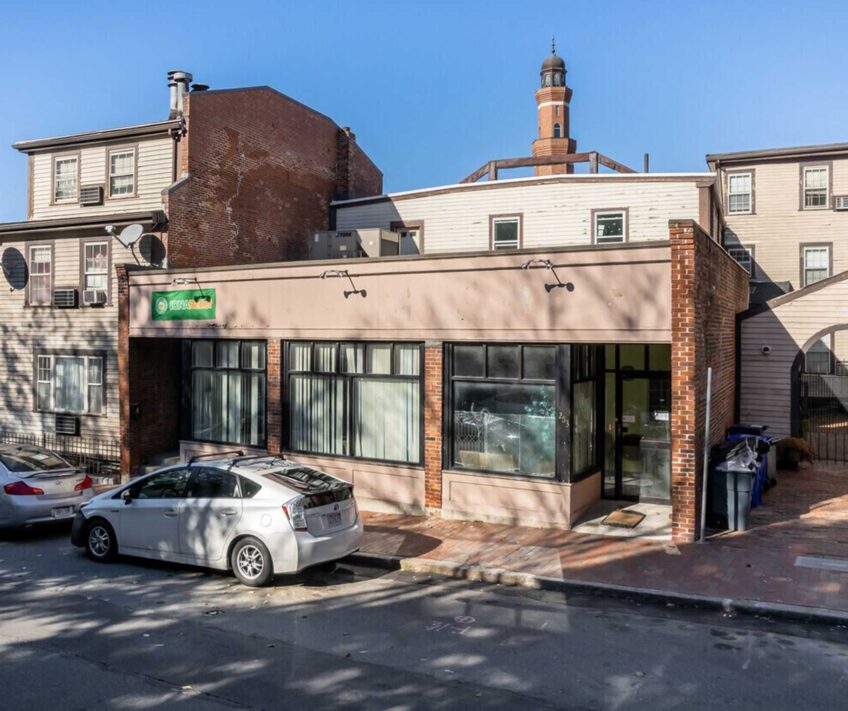
For years, Heat-n-Eats has turned food waste from Harvard University’s dining rooms into packaged, frozen meals for those in need.
As Massachusetts leads the charge in keeping food waste out of landfills, per recent study in Science, the Heat-n-Eats program marks a decade of using excess food to address hunger.
The nonprofit behind the initiative, Food for Free, is one of the nation’s oldest food rescue distribution programs. Founded back in 1981 and headquartered in Somerville, the organization aims to provide consistent and reliable access to fresh, nutritious food across Eastern Massachusetts.
Working in 15 communities in the Greater Boston area, with a focus on Somerville and Cambridge, Food for Free collects produce and minimally processed, shelf-stable foods from grocery stores like Whole Foods and Trader Joe’s, hospitals like Brigham and Women’s Hospital, and educational institutions, rescuing food that otherwise would’ve gone to waste.
In the U.S., approximately 35 % of the food supply is wasted, making up about 24% of landfills. Food for Free collects and packages such waste for distribution to about 132,000 residents per year for a total of approximately 6.2 million pounds of food, said Jessica Cantin, CEO of Food for Free.
The idea for the Heat-n-Eats program first came in 2012 as Food for Free sought to distribute the rescued food more efficiently, Cantin said. One of the places from which Food for Free would collect excess food was Harvard University Dining Services, or HUDS, where the nonprofit would receive bulk food items, such as a rice, roasted chicken and vegetables, at the end of each meal period.

Heat-n-Eats transforms excess food from Harvard’s dining halls into nutritious, frozen meals. PHOTO: FOOD FOR FREE
Food for Free proposed that the food be portioned off into individual meals and then frozen, which would make it easier to distribute. Using leftovers from Harvard’s in-house dining services, which Cantin said is a source of high-quality food with options for dietary restrictions, the two organizations created Heat-n-Eats.
When Food for Free first began collecting food waste from Harvard’s dining halls, students were excited about the initiative, Martin said. However, they weren’t able to assist. Creating an official partnership in the form of Heat-n-Eats gave students a chance to contribute to the community initiative tangibly by volunteering.
“It’s a great opportunity for engagement and thoughtful conversations about food,” said Crista Martin, director for strategic initiatives and communication at HUDS. “And so, we turned it into this process that is led by student volunteers. … We had to go through a few test and try moments and really found our way.”
Unlike Food for Free’s other programming, Heat-n-Eats focuses specifically on providing meals to students. The program has grown since it first began 10 years ago. At first, it produced meals in the low 1000s annually, Cantin said.
Now, Heat-n-Eats manages to provide 600 meals a week, for a total of about 253,000 meals given to communities in the Greater Boston area, including institutions like Bunker Hill Community College and East Boston Harborside Community School.
“We know across the Commonwealth that college students are experiencing food insecurity at record rates, and so focusing in on that population, in particular, allows us to sort of reduce the stigma of food insecurity,” Catin said, “but [also] remove … one more barrier to students being able to just focus on finishing their degree program, which inevitably hopefully leads them to more economic mobility.”
In Suffolk County, more than 45 % of adults faced food insecurity in 2023, according to a study published earlier this year by the Greater Boston Food Bank. So, Cantin said she recognizes that the work her organization does, of catering to those experiencing food insecurity, serves a greater purpose.
“It’s not just a meal,” she said.
An added benefit of food rescue is that it keeps food out of landfills, a growing priority in states across the country, including here in Massachusetts, which is leading the effort.
Since 2014, nine states have implemented food waste bans to curb greenhouse gas emissions, but progress has lagged.
A study released in September showed that of the first five states to ban food waste, only Massachusetts was successful in reducing it between 2014 and 2018, achieving a 7% drop. The other states — California, Connecticut, Rhode Island and Vermont — saw negligible shifts despite regulators saying they hoped the bans would result in notable decreases in waste.
The researchers attributed Massachusetts’s success to its regulations and enforcement, but landfills and the greenhouse gases they produce remain a primary concern in the state.
Cantin, Food for Free’s CEO, sees her organization’s efforts as contributing to the reduction of food waste and the subsequent effects on the climate.
“It’s moving the needle,” she said. “It’s not as fast as we would like it, but it’s definitely contributing to a better environment.”
The Heat-n-Eats program has received a value of $1.5 million in donations in the form of food and financial support from Harvard over the last 10 years. For Harvard students, who are concerned with “all facets of sustainability and equity,” Martin said, the program has been just as rewarding.
“Harvard is very engaged in our community, and … for Harvard writ large, it’s a core value that we are working with our partners in the community and part of this great place where we all live and work,” she said. “And there are very few things in life that are more tangible or universal than food, and the ability to work together and collaborate and be side by side with people doing this great work on behalf of Harvard and toward our broader community, I think it’s an area that everyone can relate to and feel really great about.”






